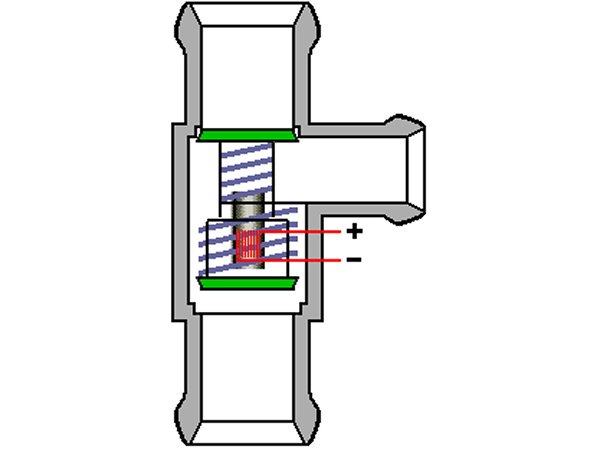
|
Cooling - Electronic Thermostat

Assignment
The electrically switch able thermostat allows it to regulate the operating temperature of the engine the same way as the running time of the ventilator, according to an characteristic field. Whereby, the coolant
temperature can be altered, e.g., depending on the load, the engine RPMs or the exhaust gas values. A high coolant temperature is possible at partial load to achieve a lower fuel consumption. At full load, in petrol
engines, it must be reduced because of the possibility of knocking and a slightly better degree of filling. Within the scope of an identity field, an even stronger pre-ignition is possible.
For the perfect regulation it now needs only an electrically powered water pump. Then, even the short circuit cycle could be omitted. All together, in respect of speed and precision, the present, self-regulating
equipment can no longer keep up the pace. One can come nearer to the limit values, e.g., with inclusion of multistage fans, because if the limit is exceeded, immediate and very effective ventilation is switched on.
Function
In the case of non-electronically regulated cooling systems, one can observe sometimes how the coolant temperature also rises at lower RPMs and high loads. Coolant temperature and load are associated with
each other. In electronically regulated cooling, the expansion element in the thermostat is differently adjusted and is provided
with an additional heating coil. Thus the engine management can control the cooling through the electric thermostat. In the case of a breakdown in the electrical/electronics system, the
function is maintained at a lower temperature level.
The electric circuit can, in addition, be used for the switching off of the interior heating. Ever since this has been air-controlled, the engines must, in addition, heat the whole water cycle. This costs time in which an
internal combustion engine does not reach its operating temperature. If the operation of the heating flaps is combined with a switch, this heating can be switched off. In this case, the driver can then even provide for
faster engine warming - with only a small loss of comfort in winter. However, it is only a matter of time, until this process is also automated.
|
|